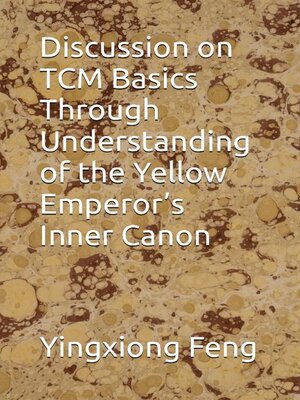Discussion on TCM Basics Through Understanding of the Yellow Emperor's Inner Canon
ebook
By yingxiong feng

Sign up to save your library
With an OverDrive account, you can save your favorite libraries for at-a-glance information about availability. Find out more about OverDrive accounts.
Find this title in Libby, the library reading app by OverDrive.



Search for a digital library with this title
Title found at these libraries:
| Library Name | Distance |
|---|---|
| Loading... |
The Huangdi Neijing, also known as the Yellow Emperor's Inner Canon, is one of the classical works of ancient Chinese medicine and is considered the foundation of traditional Chinese medicine. It is attributed to the Yellow Emperor, but in reality, it is a compilation of the medical experiences of various masters from different periods.
The Huangdi Neijing consists of two parts: Suwen (Basic Questions) and Ling Shu (Spiritual Pivot). Suwen primarily discusses fundamental medical theories, including concepts such as yin and yang, the five elements, qi, blood, and bodily fluids, as well as the system of organs, meridians, and collaterals. On the other hand, Ling Shu focuses on details such as meridians, acupuncture points, and the functions of organs. Together, these two parts form the theoretical framework of TCM.
Suwen, through exploration of topics like yin and yang, the five elements, qi, blood, bodily fluids, organs, meridians, etiology, pathogenesis, and treatment methods, establishes the fundamental theoretical system of TCM. This classic work emphasizes a holistic perspective, highlighting the importance of balance and harmony. It introduces many unique medical concepts, laying a solid foundation for the development of traditional Chinese medicine.
In practical application, the theories presented in the "Suwen" provide Chinese medicine practitioners with a rich framework for contemplation and treatment methods.
This book serves as an introduction to Traditional Chinese Medicine.







